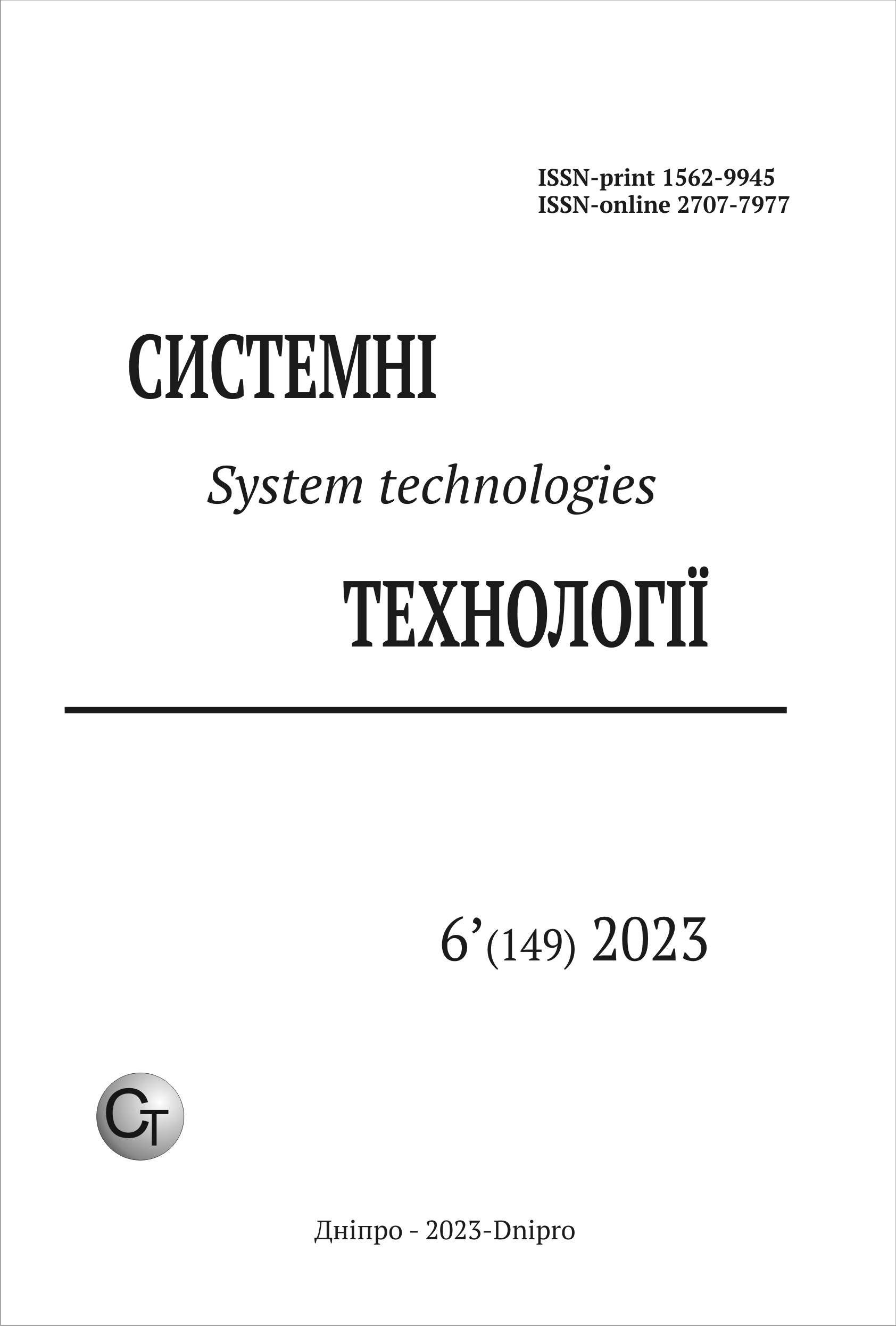МІНІМІЗАЦІЯ МІЖКЛІТЬОВОГО НАТЯГУ НА БЕЗПЕРЕРВНИХ СТАНАХ ЗА ЯКІРНИМИ СТРУМАМИ ЕЛЕКТРОПРИВОДІВ ПРОКАТНИХ КЛІТЕЙ
DOI:
https://doi.org/10.34185/1562-9945-6-149-2023-03Ключові слова:
безперервна сортова прокатка, натяг прокату, струм вільної прокатки, регулювання, комп'ютерне імітаційне моделювання.Анотація
Досліджено дієвість методу мінімізації натягу сортового прокату за інформацією про якірні струми головних електроприводів, який базується на гіпотезі про незмін-ність відношення якірного струму приводу наступної кліті до якірного струму приводу попередньої кліті в режимі вільної прокатки та передбачає прогнозування струму вільної прокатки в прокатних електроприводах за інформацією про струм вільної прокатки в електроприводах попередніх клітей. Дослідження базувалось на ком-плексній моделі процесу безперервної сортової прокатки у чотирьох чистових клітях дрібносортного стана з індивідуальними електроприводами, оснащеними системами підлеглого керування швидкості. Шляхом комп'ютерного імітаційного моделювання доведено, що застосування під час прокатки оперативного переходу від регулювання натягу шляхом коригування завданої частоти обертання електроприводу наступної кліті до безпосереднього регулювання якірного струму у ній в режимі стеження запобігає виникненню динамічних струмів і їхньому впливу на якість регулювання натягу.
Посилання
А.S. Beshta, V.N. Kuvaev, O.E. Potap, A.P. Egorov (2014) “Automation of technological processes on light-section rolling mills”: monograph/. Dnepropetrovsk: Zhurfond - 283 p.
Active control system of mill products tension at the outlet of roughing train in continuous light-section mill, M. Kuzmenko, M. Rybalchenko, O. Boyko, D. Beshta/ Naukovyi visnyk Natsionalnoho Hirnychoho Universytetu, Scientific and technical journal, 2018. №5 (167). Р. 122 – 129.
System ASRS – the history of creation and implementation / [Yu.P. Karpinsky, V.N. Kuvaev, ON Kukushkin, V.A. Chigrinsky] // «Fundamental and applied problems of ferrous metallurgy». Sat. Sci. Of the Institute of Ferrous Metallurgy of the NAS of Ukraine. Z.I. Nekrasov; Issue.17. 2008. P.301 - 310.
Kuvaev V.N. Identification of interstand efforts at continuous rolling on static loading moment of stand’s electric drives// Naukovyy visnyk Natsionalʹnoho hirnychoho universytetu. Р.77-81.
Automatic control of the rolling regime with tension based on the change in armature current of the roll drive mo-tors/ A. Egorov, V. Zvorykin, A. Mikhalyov,
M. Kuzmenko// System technologies. N 5(112). Dnipro, 2017. P.108 - 118.
The patent 1397110 USSR, IPC В21В 37/00. Device for stabilizing rolled tension on a continuous mill. SHEE “NSU”.- №4097500/23-02. Рubl. 23.05.1988. Bull. Number 19 (1988).
The patent 26896 Ukraine, IPC В21В 38/06. The method of determining the actual values of the tensile forces of the material rolled in the multi-cell state of continuous rolling. Рubl. 29.12.1999. Bull. Number 8 (1999).
The patent 124398 Ukraine, IPC (2014.01) В21В 37/52. The method of automatic minimization of rolled tension on a continuous bar mill, SHEE “NSU”. - № a201910384. Рubl. 08.09.2021. Bull. Number 36 (2019).
A.G.Shubin, A.N.Gostev, R.R. Khramshin, K.E. Odintsov (2015) “System of interstand tension compensation in roughing train of rolling mill research using mathematical modeling method”, Teoriya i praktika avtomatizirovannogo elektroprivoda. №4 (29)
Modeling mul-tiply connected control system of high-speed rolling mode to continuous light-section mill/ V.B. Zvorykin, A.P. Egorov, A.I. Mikhalyov, M.U. Kuzmenko // System technologies. N 5(106). Dnipro, 2016. P.36 - 44.
Dynamic modelof two-strand rolling in the roughingtrain of the light-section mill/ A. Beshta, A. Egorov, V. Kuvaev, O. Potap et al.// Metallurgical and Mining Industry. 2015. №2. Р. 119-122.
Завантаження
Опубліковано
Номер
Розділ
Ліцензія
Авторське право (c) 2024 Системні технології

Ця робота ліцензується відповідно до ліцензії Creative Commons Attribution 4.0 International License.















